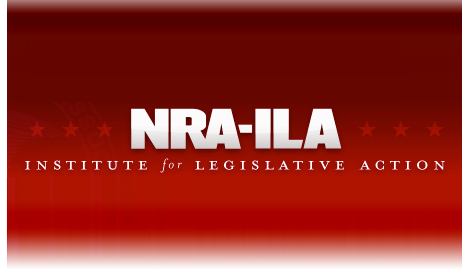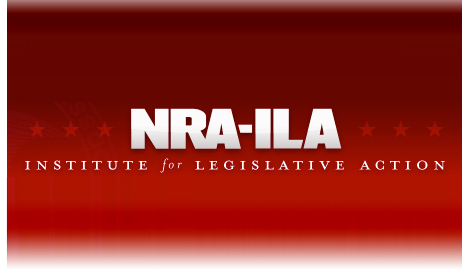
Based on the evidence in my part of the world, global warming is a myth. For years, old-timers here liked to say, “we have nine months of winter and three months of hard sledding.” But, that was back before our winters turned mean.
We northern-latitude types spend a lot of time bundled up. It’s very easy to conceal a handgun in the winter, but not always so easy to get it into action. Sure, you were blisteringly fast with your carry rig last summer. But, now that you have four extra layers of clothing, are you still as fast? Can you even get to the gun quickly enough? Have you considered the holster you wear when the weather is nice might be a very bad idea when it’s cold and you are bundled up? Maybe it’s time to look at all the options and make some adjustments to your winter carry.
In the Waistband—No Holster
Normally I would not even include this in the roundup. Except some gun-industry friends on the hunting side recently called me about their new carry guns. They had talked to some “expert” who told them a holster was a waste of money and they should just stick the pistols inside the waistband of their pants. My opinion is this is a mistake on so many levels, I can’t count high enough without taking my shoes off.
This kind of carry works occasionally with a 1911, but most others wind up falling down my pants. It’s embarrassing trying to retrieve the gun in public.
It’s not just me, either. I have a relative with a much different body type than mine who carries a gun every day as part of his job. He tells a very funny story about his Glock 23 falling down his pants while he was shopping at a crowded store. After that he always used a holster.
With winter clothing, problems are compounded because we tend to wear loose clothing in cold weather. Also, there is no retention, so the there is a reason they call them a “shoot-me-first vest.” It pretty much identifies you as carrying a gun, because outside of gun guys and photographers, few people wear them. If trouble shows up and you don’t have a Nikon around your neck, odds are you’re going to be the first target to catch a bullet.
The belt holster is still a good idea for winter carry, depending on what you wear to cover it. If the coat is unzipped, it can be swept back for a very fast draw. A short, waist-length parka that is zipped closed can be pulled up with the weak hand to allow access to the gun. Try to avoid the parkas with elastic, waist-hugging bottoms. The type of coat or parka that hangs loose at the bottom is a much better choice.
If you wear a long coat, such as an overcoat or a duster, you forfeit the option of pulling the coat up to expose the pistol. The only way to reach the gun is through the front, which means you must have the front unbuttoned so you can sweep the long coat back. That might look cool in the cowboy movies, but it’s not a smart approach. Besides, if it’s cold, you will button the coat shut, which blocks access to your handgun. There might not be time to unbutton it in an emergency situation.
In timed trials, a short coat could be pulled up by most experienced shooters to access a belt holster, draw and shoot in 2.5 to 3.5 seconds, depending on ability and type of holster. While retention holsters will add time to the draw, the added security is worth the half second.
A cross-draw holster works well in the winter, because you do not have to reach across your body with your weak arm to pull the jacket out of the way. If you are a plus-size guy like me, after adding all the bulky clothing a strong-side holster can be difficult to reach. But with a cross-draw, you can simply grab the jacket with your weak hand, on your weak side and pull it straight up, enabling your strong hand to reach over and grab the pistol.
Of course, cross-draw holsters like the Galco Cop 3 Slot also work very well when seated in a car or on a snowmobile. It keeps the gun accessible, rather than behind you and covered with multiple layers of clothing. (The 3-slots enable you to wear it strong side, too.) We found a cross-draw holster took about the same time as a strong-side belt holster to draw and shoot, or even half a second more. The extra motion and reversal of travel for the shooting hand was part of the problem. The hand must reach over across the body, grab the gun, and then reverse direction to swing the gun to the target. This takes a bit of time. However, the fumble factor was a lot lower with a cross-draw rig. We had a lot fewer, “Oh, I screwed that one up, let’s start over” scenarios. Those are fine in practice, but in real life you don’t have the option.
With cold-weather carry and the extra bulky clothing you will be wearing, a holster with some form of retention—like the Blackhawk Serpa—is a good idea. It makes certain that after you claw your coat out of the way, the gun is where you expect it to be, not tangled in your clothing.
Inside-the-Pants Holster
This is my preferred way to carry a concealed handgun in anything except cold weather. Everything that applies to using a belt holster also applies here. But, with a lot of bulky clothing, the gun can “hide” from you at times. For example, I often wear a long underwear shirt, and a wool or flannel shirt tucked in so the pistol is outside of them. They usually work their way out of my belt during the day, however, and tend to bunch up along the beltline, exactly where the pistol’s grip is found. Plus, any layering under the coat can cover the gun. This can all conspire to make it hard to find the gun in a hurry.
If I am going to belt carry in cold weather, I much prefer an outside-the-belt holster so the pistol is kept away from all the clothing that tends to collect along the beltline. This makes the handgun easier to find in a fast-developing situation. In testing, an inside-the-pants carry method took about the same amount of time to draw and fire as from a belt holster. But, that was with everything perfect. I’ve found in real life things get more complicated as the day wears on and clothing shifts. I make it a point to try to practice the draw at various times during the day and it never goes as smoothly as a focused range session.
That’s a good practice tip for any holster. It’s one thing to draw on the range when you have everything arranged nicely and you know exactly what you are going to do. But, if you (safely) draw the pistol at various times during your daily routine, you will identify problems you won’t see at the range. Just be aware of where you are, since it can cause quite a scene at the grocery store.
Shoulder Holster
Shoulder holsters don’t seem to have the popularity they experienced back when Sonny Crockett was the coolest guy on the planet. For winter carry, however, they are an excellent choice. They are not going to be the fastest option, but they are probably the most reliable. With a shoulder holster, the worst-case scenario is to simply unzip your coat and reach for the gun. It
takes me about 3.5 seconds to react, unzip, draw, point and shoot. Which is pretty slow compared to say, drawing from my competition holster.
If you leave the top of your coat unzipped, it’s easy to reach in for the gun without any other steps, which will cut a second or more from the time. It’s still slow, but the upside is the pistol is always easy to get to. Wear it under your coat and over any other layers of clothing. That way you only need to reach into the coat to grab the gun.
My shoulder carry holster of choice is a Galco Miami Classic I got years ago when I bought my first 1911. It’s the same one Crockett wore under his white linen jacket with the sleeves pushed up.
Pocket Carry
There is a big temptation to just stick the handgun in a coat pocket, but if you want to live through a confrontation, fight that temptation. Once again, it works pretty well on the range. But, after hours of carry, the gun always seems to shift out of position and tangle in the pocket liner so it’s hard to get into action quickly.
Pocket Holster
A pocket holster will help keep the gun oriented correctly in the pocket for a fast acquisition
and draw.
The question becomes, which pocket? The outside coat pocket is a good choice, except when you remove your coat when you come indoors and the gun goes with it. You can, of course, transfer the gun to another pocket. But, doing this in a crowded restaurant can really spoil the ambiance if somebody sees you.
A small semi-automatic or a J-frame revolver in a pocket holster in your front pants pocket is a good alternative. As a primary gun or a backup, it is easy to access—even while wearing a winter coat. Plus, it stays with you when you remove the jacket.
Pocket holsters also have a strong tactical advantage. If you are pulling up a coat to access a belt holster or reaching for a gun in a shoulder holster, your intentions are evident to anybody watching. But, people have their hands in their pockets all the time in cold weather, so you can be ready without calling attention to yourself.
In testing, I found the fastest carry draw was from a pocket holster, with my hand in the pocket and on the gun. Even an old, slow, guy like me can draw and fire in 1 second or faster.
Keep in mind you will always be slower in the winter, so plan strategically. Also, your support hand is going to be busy moving clothing out of the way and will have to chase your strong hand after the draw. You will find that the draw is usually not going to work with the classic five-step style you have practiced. So, no matter which holster you settle on, get some range time with your winter rig to practice drawing and shooting while wearing the extra clothing Mother Nature forces us into this time of year.
Besides, all the movement will help keep you warm.







































